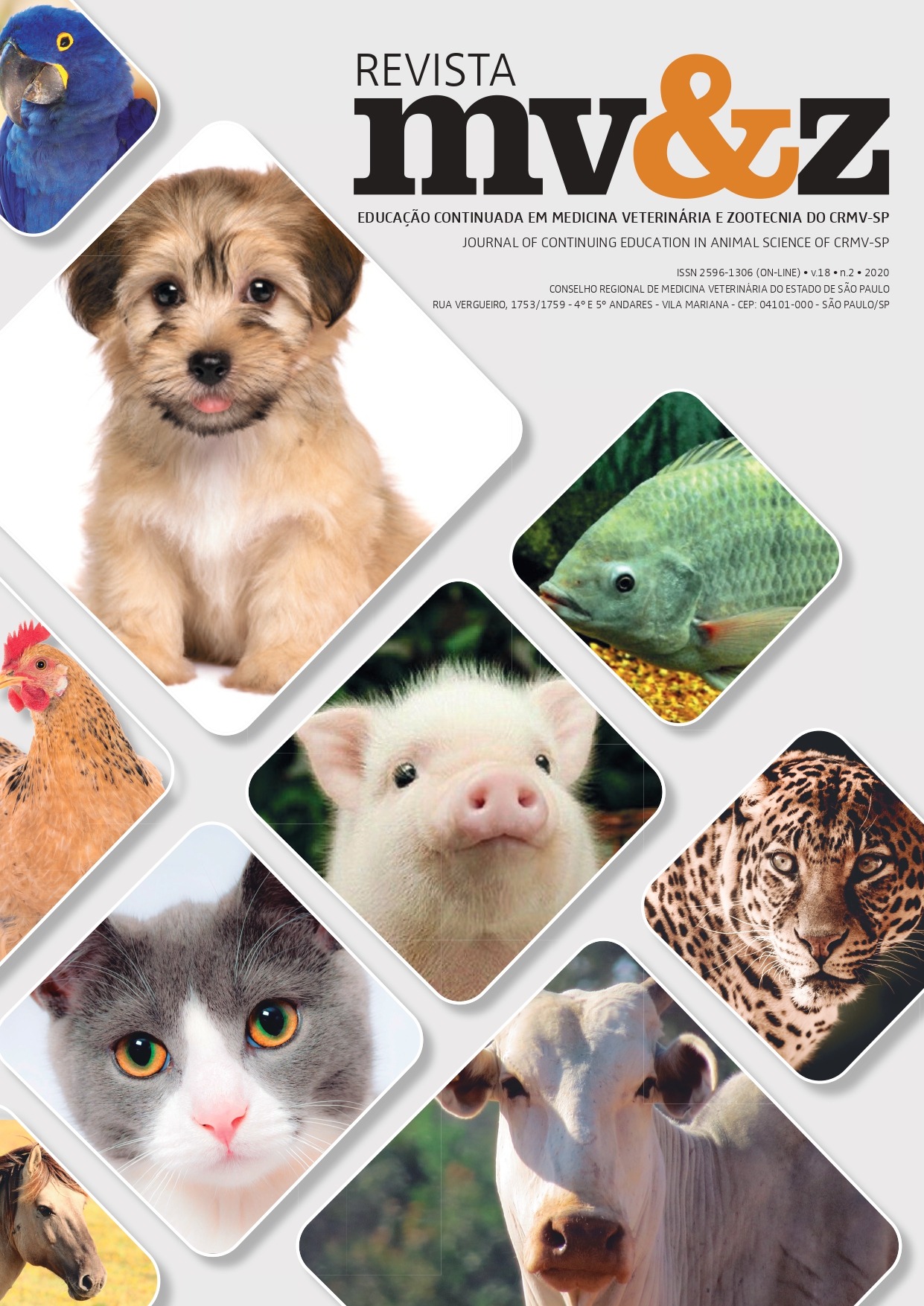Clinical and surgical approach of congenital portosystemic shunt in small animals: are there new informations?
Main Article Content
Abstract
It was performed a review of pathophysiology, clinical signs, diagnostic and main treatments and techniques for portosystemic shunts in small animals. The researched Sources were: a 20 years retrospective research of CAB, MEDILINE and collection of Faculty of MedicineVeterinary and Animal Science (FMVZ) of the Universidade de São Paulo (USP). Congenital portossystemic shunts (CPSS) are one of the vascular abnormalities more common in dogs. Small breeds are the most affected. The CPSS in dogs and cats, are vascular communications between portal venous system and systemic venous system, in other words, a secondary via. There are two types of CPSS, the intrahepatic and extrahepatic shunts, observed in large and small breeds, respectively. The diagnosis is based on clinical findings of young dogs referring delayed development, lethargy, convulsions, behavior disturbances mainly after food ingestion, poor recovery after anesthesia or sedation, hepatic encephalopathy crisis observed breeds with predisposition. Definitive diagnosis of CPSS is done by abdominal doppler ultrasonography, computed tomography angiography or magnetic resonance. Medical management can alleviate signs of hepatic encephalopathy. However, long term treatment is questionable because blood circulation is still bypassing liver to systemic circulation, leading to disturbance of hepatotropic factors distribution to the liver, resulting in liver atrophy. The only definitive treatment is the surgical one. The ideal technique is the progressive attenuation of anomalous vessel and avoid acute portal hypertension. Within the described techniques for surgical treatment, the use of ameroid constrictor represents the safest way of vessel closure. On the other way, some CPS patients can suffer severe perioperative complications. So they need specific clinical and surgical approaches associated to precise image diagnostic to correct localization of the anomalous vessel and surgical success.
Article Details
1. Autores mantém os direitos autorais e concedem à revista o direito de primeira publicação, com o trabalho licenciado sob a Creative Commons Atribuição-NãoComercial-SemDerivações 4.0 Internacional
2. Autores têm autorização para assumir contratos adicionais separadamente, para distribuição não-exclusica da versão do trabalho publicada nesta revista (ex.: publicar em repositório institucional ou como capítulo de livro), com reconhecimento de autoria e publicação inicial nesta revista.
3. Autores têm permissão e são estimulados a publicar e distribuir seu trabalho online (ex.: em repositórios instituicionais ou na sua página pessoal) a qualquer ponto antes ou durante o processo editorial, já que isso pode gerar alterações produtivas, bem como aumentar o impacto e a citação do trabalho publicado (Veja O Efeito do Acesso Livre);
